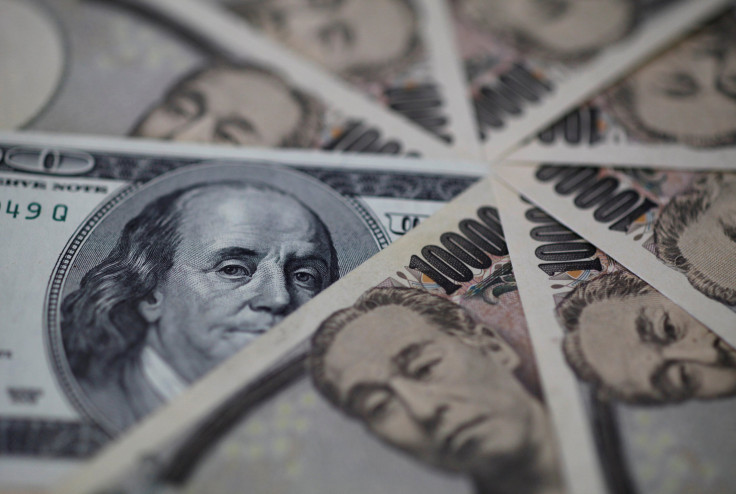US Dollar Value Today: Currency Rises After Fed Interest Rate Decision, While Stocks Climb

The dollar index (DXY) hit a 14-year high of nearly 103 against a currency basket early Thursday following the Federal Reserve’s decision to raise its target for the federal funds rate, an interbank lending rate closely followed by mortgage, bond and other interest rates. The currency’s rise marked a more than 2 percent jump since the Fed’s 2 p.m. Wednesday announcement.
Against the yen, the dollar surged to its highest level since February, peaking at about 118.59 yen, while the dollar-to-euro exchange rate hit a 13-month high of just over 0.96 euros.
A higher federal funds rate tends to boost the value of the American currency, both by lowering inflation, and therefore slowing the dollar’s depreciation, and by stirring up greater demand for U.S. government bonds, whose interest rates tend to rise in step with the Fed’s rate target, making them a more lucrative asset.
The dollar wasn’t the only American economic indicator soaring in the wake of the Fed decision.
After taking an initial nosedive around the time of Fed Chair Janet Yellen’s 2:30 p.m. Wednesday press conference, the Dow Jones Industrial Average (DJI), S&P 500 (GSPC) and Nasdaq Composite (IXIC) indexes rose sharply Thursday morning, proving the previous afternoon’s response to be a knee-jerk reaction.
The Dow continued its climb to 20,000 points, reaching 19,893.88 by late Thursday morning, ahead of a Wednesday market close at 19,792.53. The S&P, meanwhile, rose to 2,266.06 over Wednesday’s close of 2,253.28, and Nasdaq hit 5,464.84, above its previous close of 5,436.67.
U.S. Treasury bond yields inched higher, as is usually the case with federal funds rate hikes, with the yield on two-year Treasuries (US2Y) rising to a peak of more than 1.3 percent, its highest level since August 2009. The yield on 10-year notes (US10Y) rose to a 14-month high of around 2.6 percent, while 30-year Treasuries (US30Y) jumped to about 3.2 percent, a 17-month high.
© Copyright IBTimes 2025. All rights reserved.






















